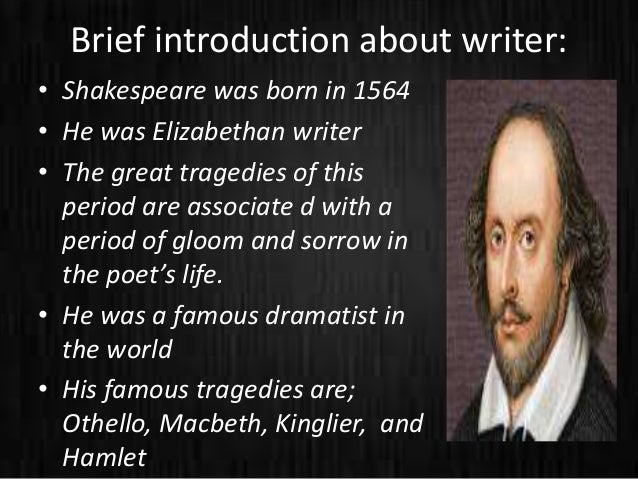
Reset Password
The Tragedy of Hamlet, Prince of Denmark, often shortened to Hamlet (/ ˈhæmlɪt /), is a tragedy written by William Shakespeare sometime between and It is Shakespeare's longest play, with 29, blogger.comters: Hamlet, Claudius, Gertrude, Polonius, Tone Dark, ironic, melancholy, passionate, contemplative, desperate, violent. Themes The impossibility of certainty; the complexity of action; the mystery of death; the nation as a diseased body. Motifs Incest and incestuous desire; ears and hearing; death and suicide; darkness and the supernatural; misogyny · Hamlet had to face one of the most difficult realities: injustice. A task that presents a dilemma to him: “to be or not to be”. While pointing out questions that cannot be answered, the play as a whole chiefly demonstrates the difficulty of knowing the truth about other people: who are guilty or innocent, which their motivations and feelings are
6 Major Themes in Hamlet
· Hamlet had to face one of the most difficult realities: injustice. A task that presents a dilemma to him: “to be or not to be”. While pointing out questions that cannot be answered, the play as a whole chiefly demonstrates the difficulty of knowing the truth about other people: who are guilty or innocent, which their motivations and feelings are · Worried about his own guilt, Hamlet also becomes hateful, despising his uncle, voicing anger at his mother, frustrated with his traitorous friends, and alienating Ophelia (whom he once courted). His anger borders on ruthlessness, and he is responsible for numerous deaths throughout the play, but he never loses his reflective and melancholy traits In , William Richardson sounded the key notes of this analysis: Hamlet was a sensitive and accomplished prince with an unusually refined moral sense; he is nearly incapacitated by the horror of the truth about his mother and uncle, and he struggles against that horror to

Navigation menu
· Hamlet had to face one of the most difficult realities: injustice. A task that presents a dilemma to him: “to be or not to be”. While pointing out questions that cannot be answered, the play as a whole chiefly demonstrates the difficulty of knowing the truth about other people: who are guilty or innocent, which their motivations and feelings are · Worried about his own guilt, Hamlet also becomes hateful, despising his uncle, voicing anger at his mother, frustrated with his traitorous friends, and alienating Ophelia (whom he once courted). His anger borders on ruthlessness, and he is responsible for numerous deaths throughout the play, but he never loses his reflective and melancholy traits Tone Dark, ironic, melancholy, passionate, contemplative, desperate, violent. Themes The impossibility of certainty; the complexity of action; the mystery of death; the nation as a diseased body. Motifs Incest and incestuous desire; ears and hearing; death and suicide; darkness and the supernatural; misogyny

Hamlet Characters
· In the play, Hamlet, there are just two individuals from the cast who are female characters. One is Gertrude who is anticipated as a forbidden, cutthroat and a prostitute. The other, Ophelia, is cast to be an innocent and oblivious young lady. Together, these ladies portray the female sex in William Shakespeare’s play · But Hamlet is not just a blind revenge seeker who wants to kill his evil uncle and usurp the throne. He is intellectual, seeking moral ground, questioning himself and the justice of his actions. This inner dialogue of Hamlet is what makes the character such a compelling study, and so relevant a character model to present day In , William Richardson sounded the key notes of this analysis: Hamlet was a sensitive and accomplished prince with an unusually refined moral sense; he is nearly incapacitated by the horror of the truth about his mother and uncle, and he struggles against that horror to

Your password reset email should arrive shortly.
· In the play, Hamlet, there are just two individuals from the cast who are female characters. One is Gertrude who is anticipated as a forbidden, cutthroat and a prostitute. The other, Ophelia, is cast to be an innocent and oblivious young lady. Together, these ladies portray the female sex in William Shakespeare’s play In , William Richardson sounded the key notes of this analysis: Hamlet was a sensitive and accomplished prince with an unusually refined moral sense; he is nearly incapacitated by the horror of the truth about his mother and uncle, and he struggles against that horror to · Worried about his own guilt, Hamlet also becomes hateful, despising his uncle, voicing anger at his mother, frustrated with his traitorous friends, and alienating Ophelia (whom he once courted). His anger borders on ruthlessness, and he is responsible for numerous deaths throughout the play, but he never loses his reflective and melancholy traits
No comments:
Post a Comment